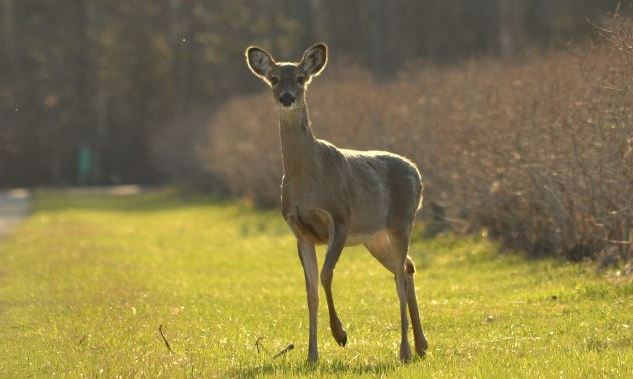A deer stomping has everything to do with making a sound not for its own benefit but for the benefit of other deer that might be within the hearing of it. This means whenever something attracts the attention of a deer the animal will fix its gaze upon that object.

20 Things To Know About Deer Body Language And Behavior
Well deer often stomp their feet on the ground to alert other deer nearby of a possible threat or intruder into the area.

. The stomping and snorting serves two purposes. Its not learned over a hunting season or two or even a. -- Deciphering the body language of whitetail deer is an art.
Deer frequently stomp a front foot to alert other deer or attempt to lure any intruder into exposing itself. Youll also warn your fellow members as well which helps you discover them more quickly. The deer may also begin stomping when they become suspicious of nearby activity.
Their hooves are not just for walking. It usually means there is a fly tickling his leg. There is a simple way of showing they are aware there may be a danger but they have not yet determined what type of danger it is.
Whenever an alarmed doe stomps her forefoot this also lays invisible spots of interdigital scent. According to his research from the 1950s hoof stamping behavior is also associated with olfactory communication among whitetails. Howevera foot-stomp can also be a warning to other deer that a stranger you another buck or a predator is near.
A deer just like any other critter leaves scent every time it takes a step irregardless if it is stomping or not. This compound floods the deers circulatory system during heightened times of danger. Each time a deer stamps its forefoot there is a high probability that interdigital scent is placed on the ground Rue once said.
The deer is looking. In some animals like deer for instance stomping a foot is a sign to other deer that they have spotted danger or can also signal a challenge to rivals in some species such as buffalo. The stomp is an early warning system.
Horses will also sometimes paw at the ground out of impatience or nervous energy. This is extremely beneficial for keeping the moths and caterpillars in. It is rare for a deer to stare directly at you though some observers may be familiar with this situation.
Especially the buck that hadnt come out of the brush yet. The birds love seeds and berries but they also eat a lot of insects and caterpillars. Deer are Prey Animals.
A forefoot is lifted slowly held for a second and then stomped forcefully downward releasing scent from the interdigital gland. In short a buck stomping its foot at you is a threat and a challenge. More often than not it means the deer that you are hunting smell you.
This may be done repeatedly while the deer uses its eyes ears and nose to identify the source of alarm. Its frustrating especially since so many hunters are quite meticulous about scent control and hunting under favorable wind conditions. Deer unlike most herd animals do not vocalize with much variety or expression.
Specifically the flight response to danger is heightened by the increased flow of adrenaline epinephrin. The first is to induce some movement but the second is just as important she has secreted an alert musk from the gland between her hoves warning other animals in the area. In the case of the whitetail it is quite possible the snort behavior is linked to the animals chemical reaction to danger.
This is NOT the case with horses. The dreaded foot stomp is used when a deer senses danger but cant identify the object of its suspicion like a hunter for instance. Stomping their feet makes a noise that serves to warn other deer in the area.
The deer is basically communicating to its herd something is off here pay attention. It seems logical this enables deer to scent-track each other.

20 Things To Know About Deer Body Language And Behavior

20 Things To Know About Deer Body Language And Behavior


0 Comments